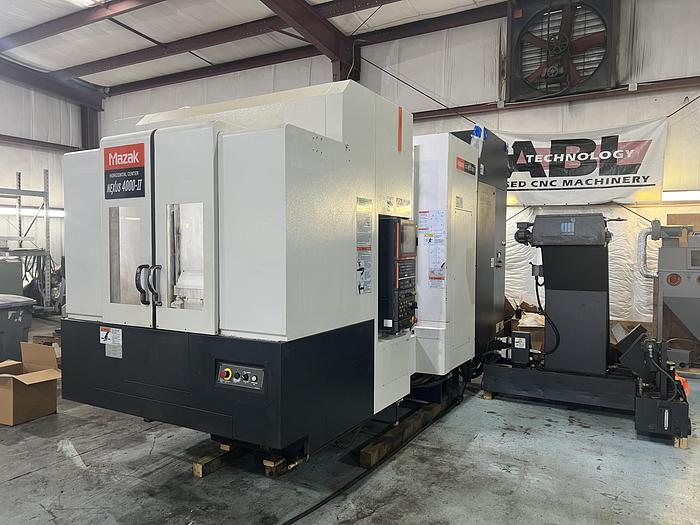A horizontal machining center (HMC) is a machining center with its spindle in a horizontal orientation. This machining center design favors uninterrupted production work. One reason for this is that the horizontal orientation encourages chips to fall away, so they don't have to be cleared from the table. Typically, vertical machining centers cost less than their horizontal counterparts. Horizontal machining centers are more complex and come with a higher price point and increased productivity. Vertical machining centers also take up less space in comparison to horizontal machining centers. (6) Great Benefits of a horizontal machining center include:
~ Speed
~ Durability
~ Capacity
~ Precision
~ Chip Evacuation
~ Decreased Costs and Increased Profits
You will find horizontal machining centers in both 40 taper, and 50 taper versions for greater rigidity. Travels in X, Y and Z axis can vary greatly, as can the number tool positions and spindle RPM’s. It is quite common for HMC’s to have coolant through the spindle, but this should not be assumed to always be the case. Most often, a HMC will have a built in rotary table, generally in a square or rectangular configuration, but also sometimes circular. These rotary tables can be configured to increment in thousandths of a degree, 1 degree, 5 degrees, or sometimes something else unique.
There are many high end manufactures of HMC’s, some of which include Okuma, Niigata, Makino (formally Leblond Makino), Matsuura, Mazak, OKK, Kitamura, DMG-Mori (formally Mori Seiki), Toyoda, DN Solutions (formally Doosan, and Daewoo before that), Yasda, Hyundai Wia (formally Hyundai Kia, and Hyundai before that), Haas, Kiwa, Mitsui Seiki and Enshu. You might even see some others on the market made by now defunct companies such as Cincinnati, Hitachi Seiki.


































